Tetraponera unidens Santschi - new status
 Type
location Zaïre (Tetraponera
ophthalmica Em. stirps unidens n.stirps, Santschi, 1928d:
60,
illustrated, queen) Mongendé, 13.iv.1921, Dr H Schouteden - see below Type
location Zaïre (Tetraponera
ophthalmica Em. stirps unidens n.stirps, Santschi, 1928d:
60,
illustrated, queen) Mongendé, 13.iv.1921, Dr H Schouteden - see below
junior synonym nasuta (Tetraponera
nasuta, Bernard, 1952:
222, illustrated, queen; Terron, 1971: 74, all forms) from Guinea
- see below  . .
|
 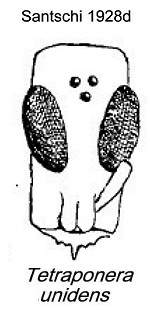 Santschi's (1928d) description of unidens is at Santschi's (1928d) description of unidens is at  . .
New Status - from Santschi's description and
illustration, together with the specimens from Cameroun, that I have
identified and photographed, it seems highly likely that unidens
is readily separable from Tetraponera
ophthalmica and, so, merits the status of a full species.
Moreover, it seems identical with the later described nasuta
and so that must be reduced to the status of a junior synonym.
Ward (1990:489) gave the "current nominal combination"
as Tetraponera nasuta Bernard (1952: 22; from Guinea); and Tetraponera
ophthalmica unidens Santschi (1928: 60; from Zaïre); with the
annnotation that he had examined specimens, as well as others of T.
ophthalmica Emery (1912: 98; from Cameroun).
|
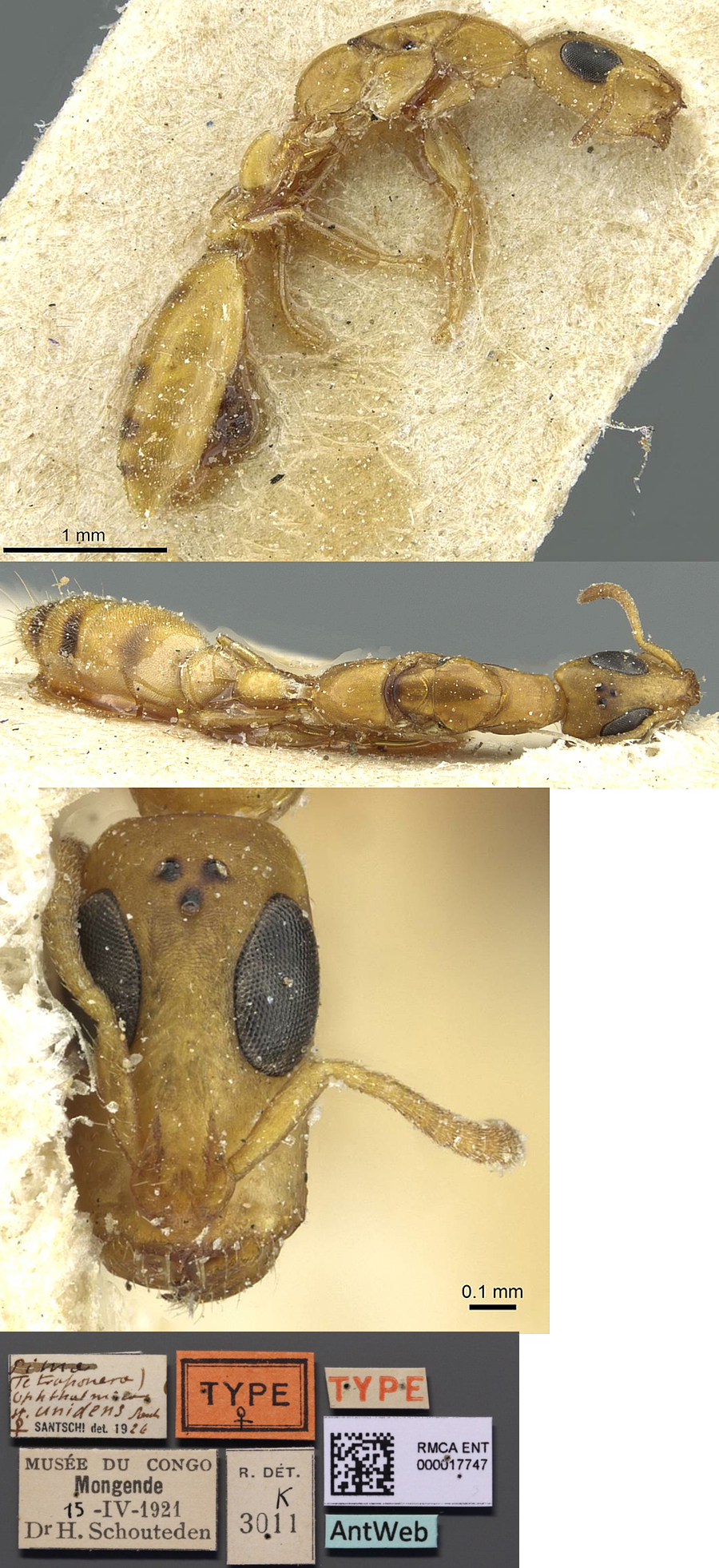 The photomontage of
the type queen is collated
from http://www.antweb.org/specimen.do?name=rmcaent000017747. The photomontage of
the type queen is collated
from http://www.antweb.org/specimen.do?name=rmcaent000017747.
|
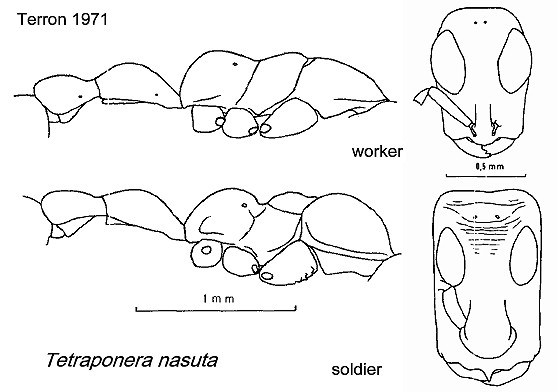 Tetraponera
nasuta Bernard - Tetraponera
nasuta Bernard -
type location Guinea, Mt. Nimba, holotype dealated queen only,
from Zouépo, forest, 1250 m, collector Lamotte; also from Cameroun (Terron,
1971: 74, who described all morphs).
QUEEN (nasuta) - TL 5.1, HL 1.3, HW 0.6 mm;
entirely clear yellow-orange, except for thin brown bands on the
posterior two-thirds of each gastral tergite; all of body shiny, finely
shagreened. Hairs rare; but sparse, recumbent golden pubescence. Head
cylindrical, narrowing in the posterior quarter - the most elongated of
known Tetraponera; with a unique elongated anterior process on
the clypeus, Eyes relatively enormous - 0.46 X 0.30 mm. Thorax also
special in the form of the pronotum, which is waisted; most of thorax
finely reticulated, without large puncturations or ridges. Petiole very
slender, sculpted as the thorax. Gaster elongated and shiny. Anterior
legs with slender femora and tibia dilated as other genus members
(after Bernard, 1952).
Unique in having a major caste with unknown functions
(Terron, 1971). Worker TL 4.1-4.7 mm; Soldier TL 4.6-4.9 mm; see -  . .
|
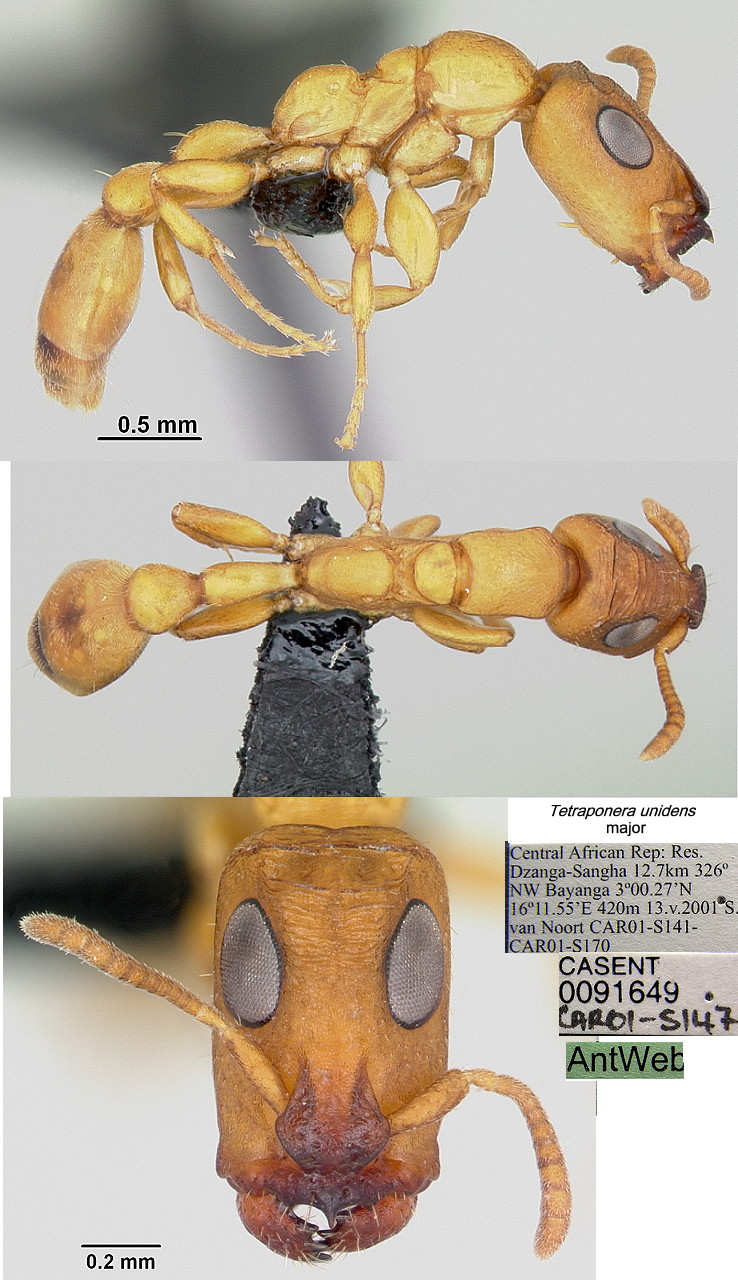 The photomontage of the phragmotic soldier is collated
from http://www.antweb.org/specimen.do?name=casent0091649,
where it is labelled as Tetraponera ophthalmica. The answer to
Terron's question as to the function of the major morph may be that it
is a phragmotic form used to block nest entrances - as the head in
lateral profile is flattened dorsally, to some extent ventrally and has
an abrupt flattened anterior; there also are shallow scrobes into which
the flattened scapes fit so that they are below the main plane of the
face. The photomontage of the phragmotic soldier is collated
from http://www.antweb.org/specimen.do?name=casent0091649,
where it is labelled as Tetraponera ophthalmica. The answer to
Terron's question as to the function of the major morph may be that it
is a phragmotic form used to block nest entrances - as the head in
lateral profile is flattened dorsally, to some extent ventrally and has
an abrupt flattened anterior; there also are shallow scrobes into which
the flattened scapes fit so that they are below the main plane of the
face.
|
Oxford University Museum
specimens
Tetraponera unidens
B Taylor det. |
Cameroun
G Debout & A Dalecky
Cameroon 20
|
25.iii.2001
MAM
2°34.07' N
9°53.80' E
|
on Leonardoxa africana africana
|
1
|
 |
Tetraponera unidens
B Taylor det. |
Cameroun
G Debout & A Dalecky
Cameroon 17
|
25.iii.2001
MAM
2°34.07' N
9°53.80' E
|
on Leonardoxa africana africana
|
2
|
|
Tetraponera unidens
B Taylor det.
Queen
|
Gabon
Y Braet
Gabon 63
|
14.v-11.vi.2006
Pongara
00°34' N
09°19' E
|
South Point
Wingombe, lagoon edge
|
1
|
 |
|
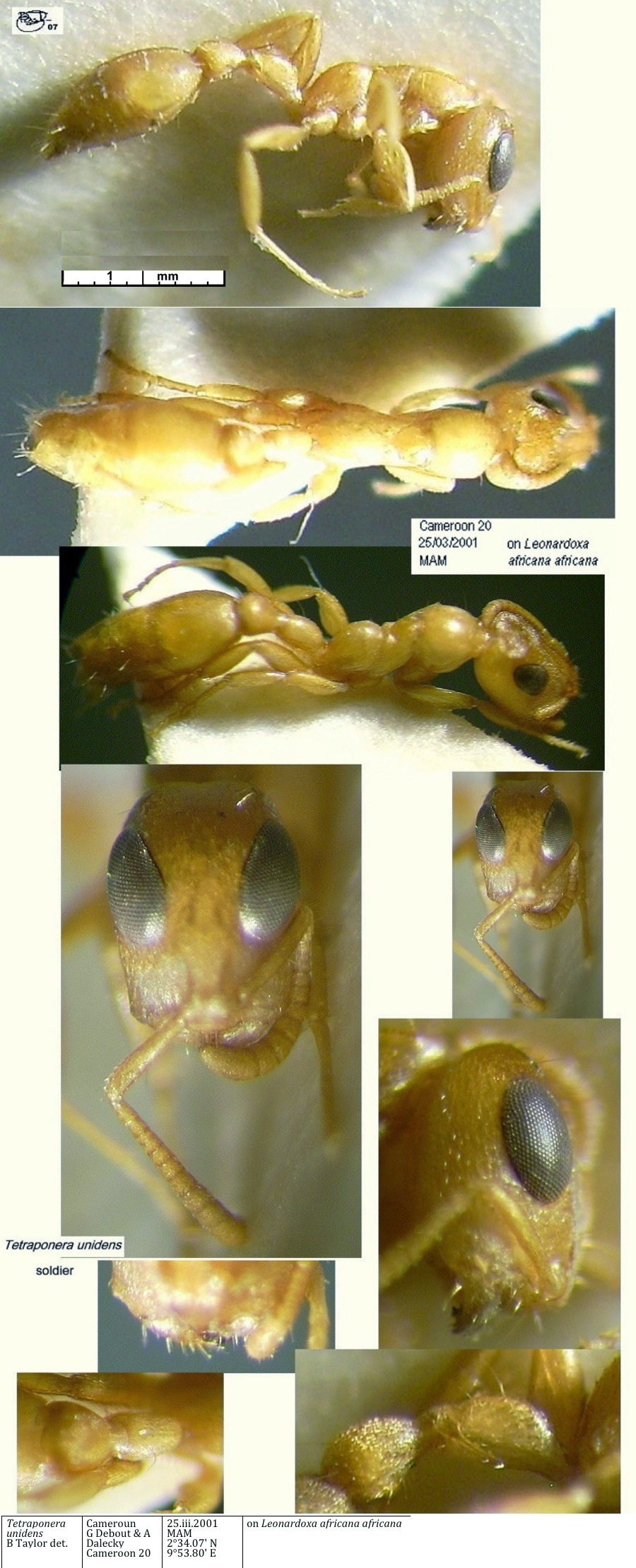 The photomontages are
of workers collected in Cameroun
- south-western tropical coastal forest area between Edéa and Campo,
Mamelles
(McKey Wolbachia project Cameroon 20). The photomontages are
of workers collected in Cameroun
- south-western tropical coastal forest area between Edéa and Campo,
Mamelles
(McKey Wolbachia project Cameroon 20).
Major
|
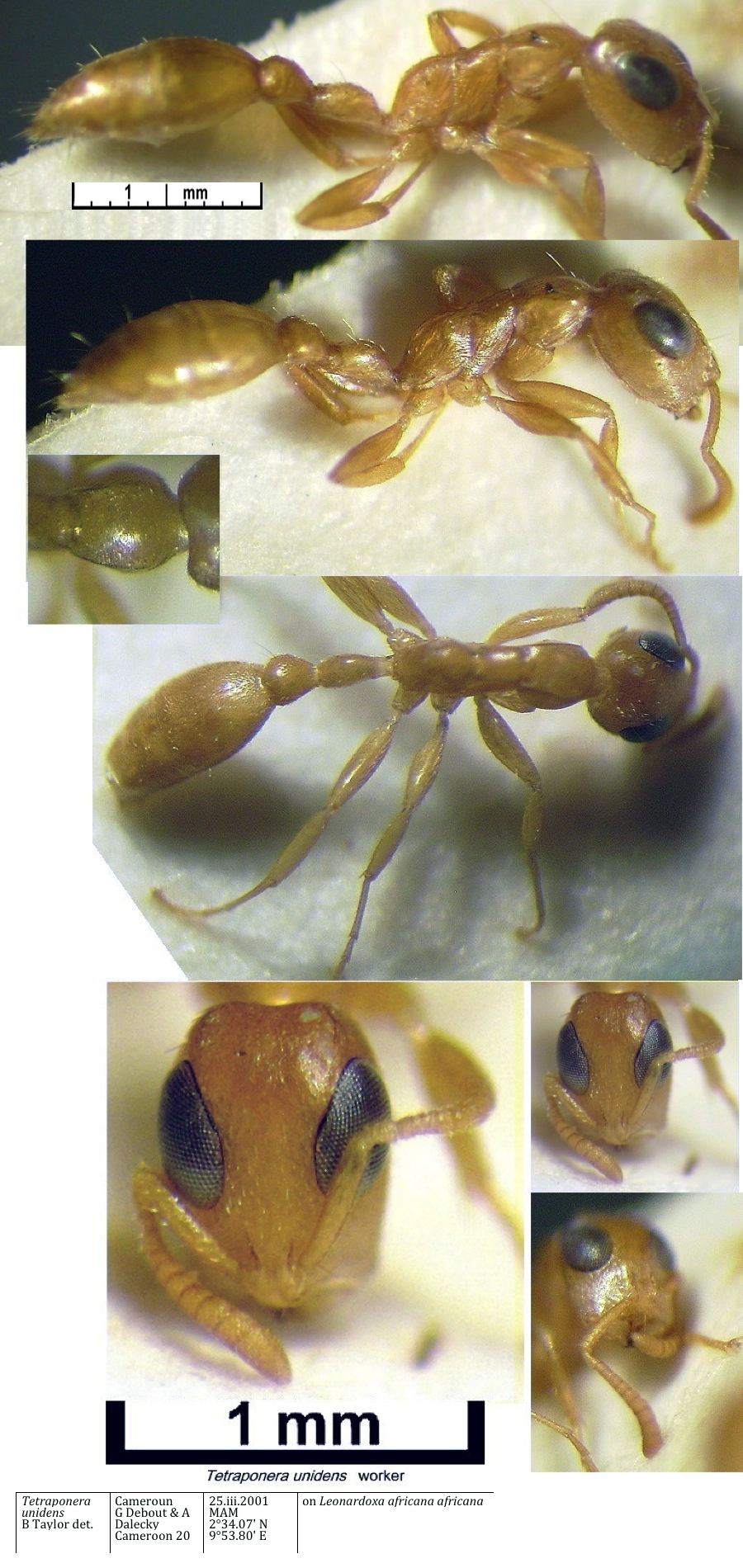 Minor Minor
|
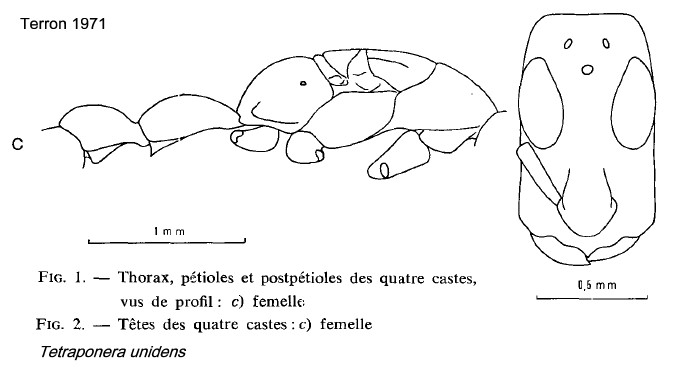 The queen, as T. nasuta, illustrated by Terron
(1971). The queen, as T. nasuta, illustrated by Terron
(1971).
|
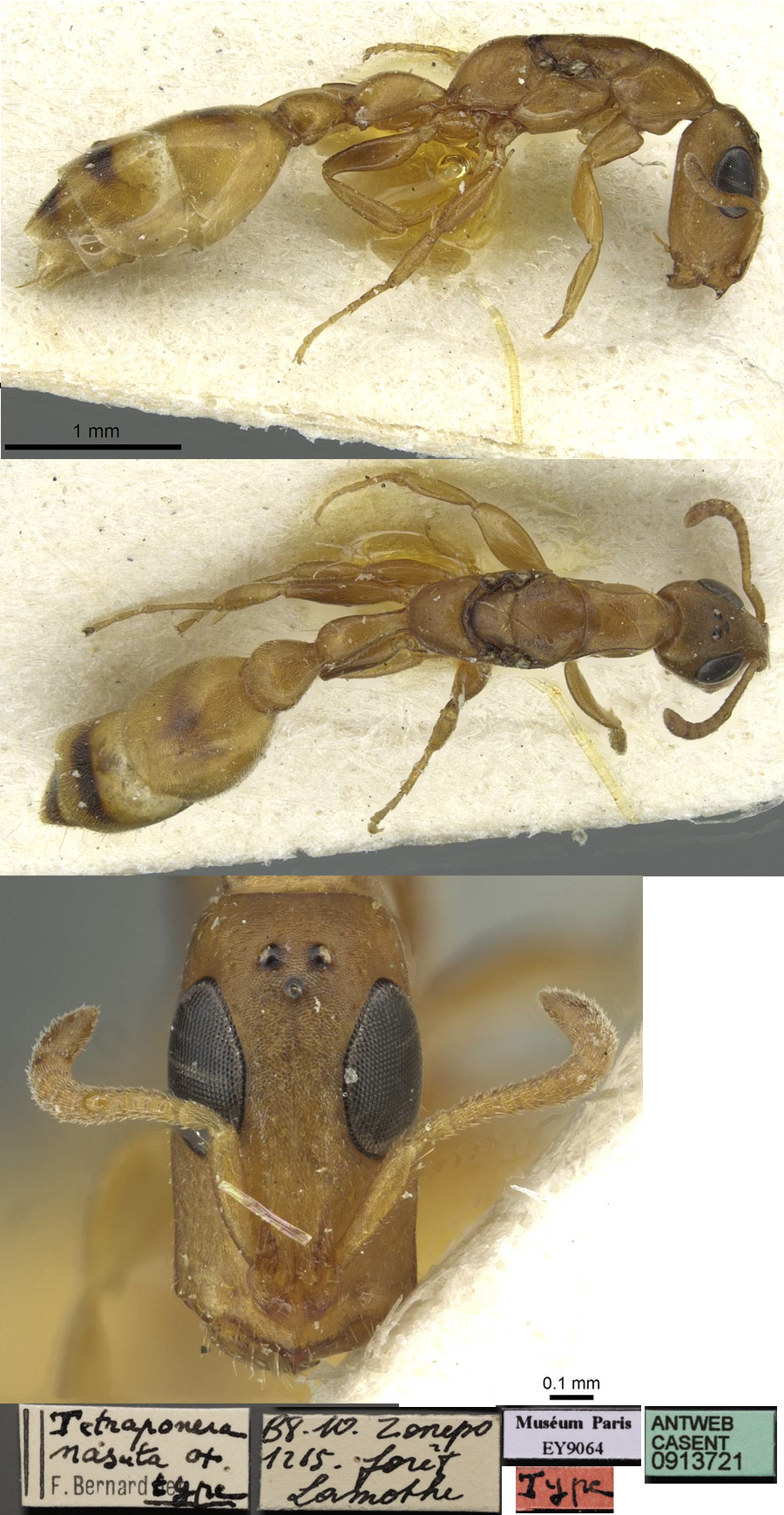 The photomontage of
the nasuta queen is collated
from http://www.antweb.org/specimen.do?name=casent0913721. The photomontage of
the nasuta queen is collated
from http://www.antweb.org/specimen.do?name=casent0913721.
|
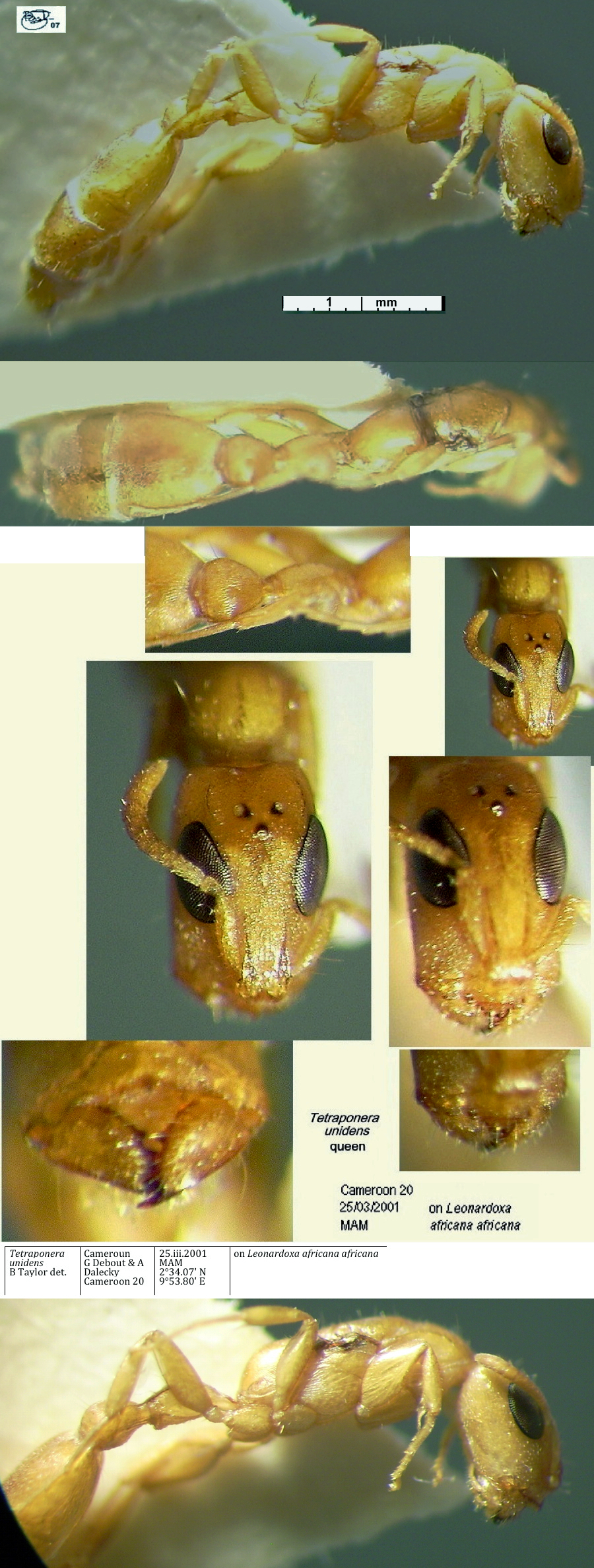 The photomontage is
of a queen collected in Cameroun, as above. The photomontage is
of a queen collected in Cameroun, as above.
|
 The photomontage is
of a queen from Gabon,
Pongara National Park; collector Yves Braet (Gabon 63). The photomontage is
of a queen from Gabon,
Pongara National Park; collector Yves Braet (Gabon 63).
|
|